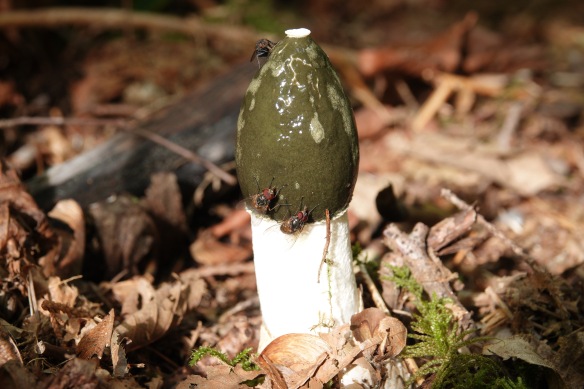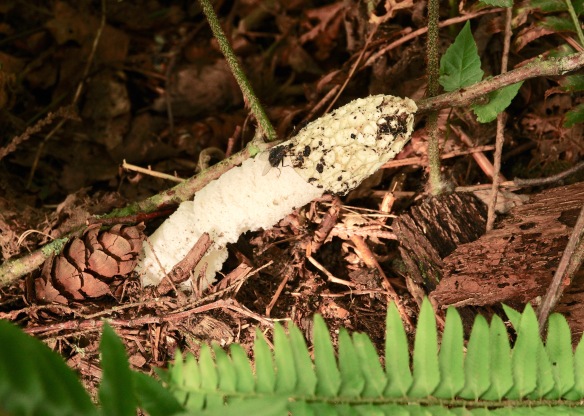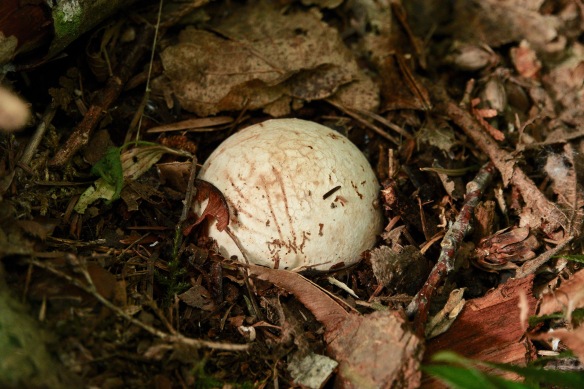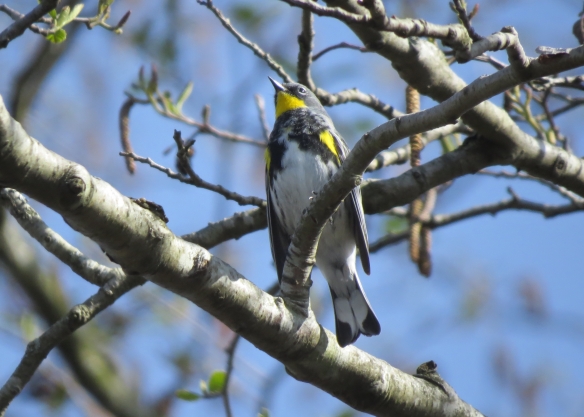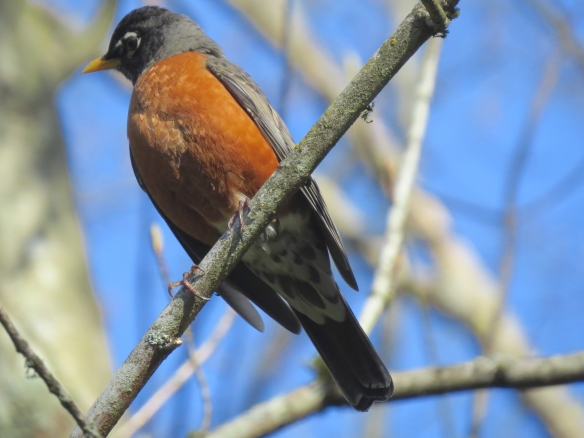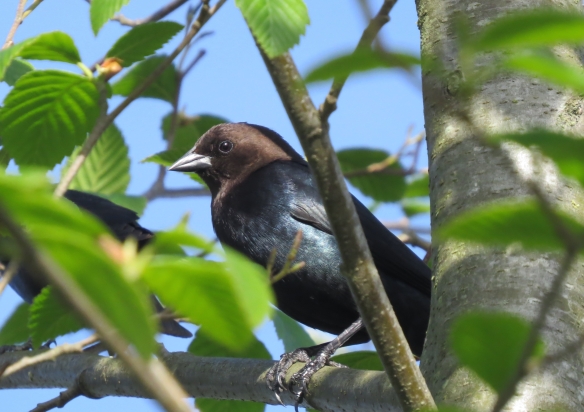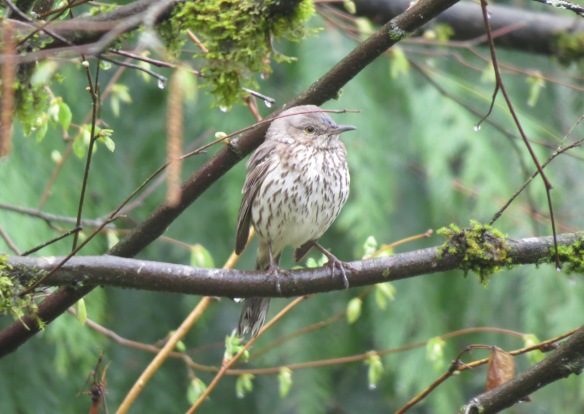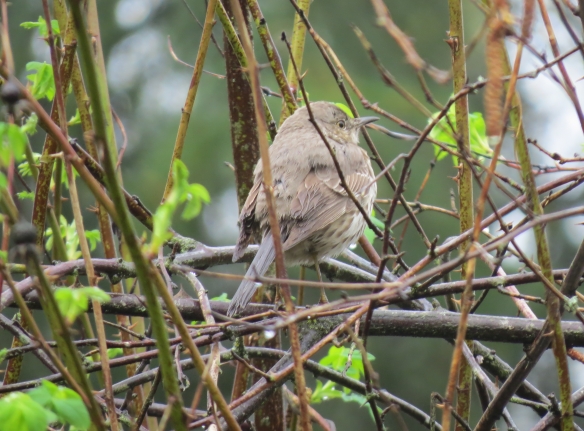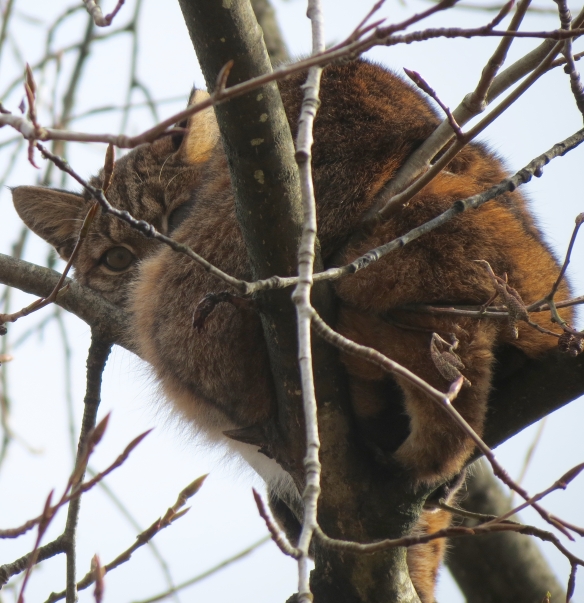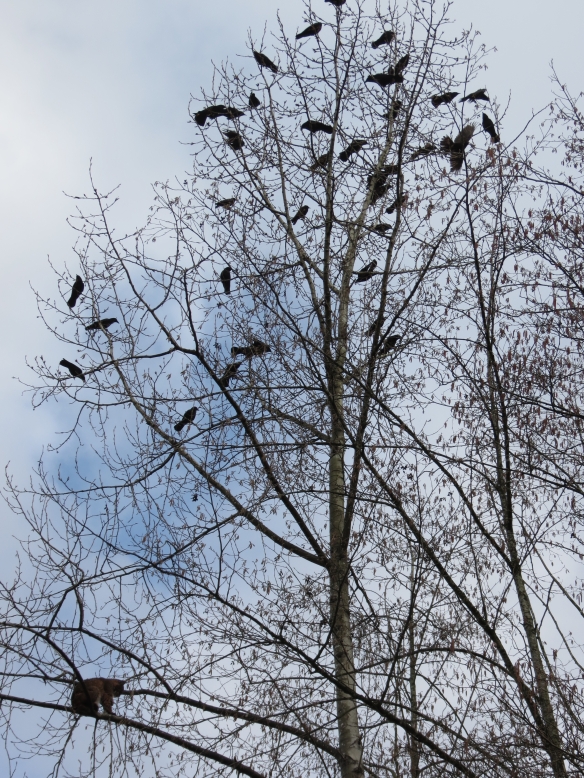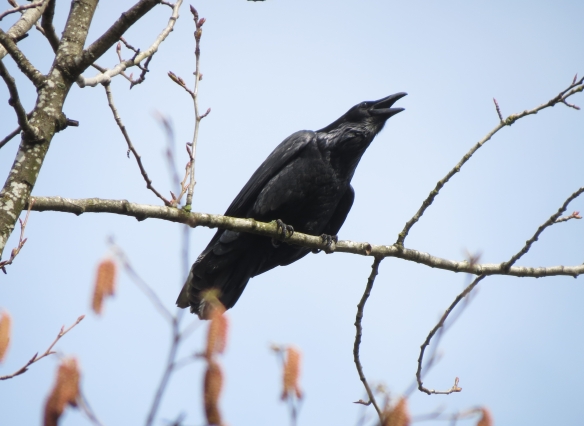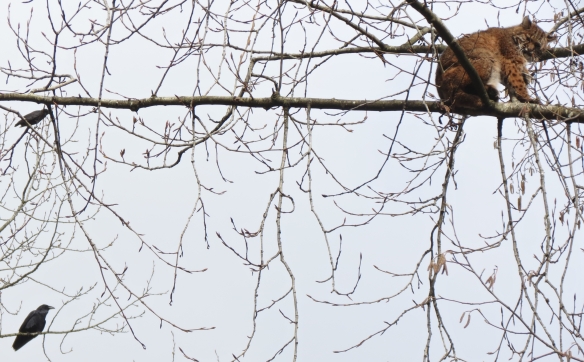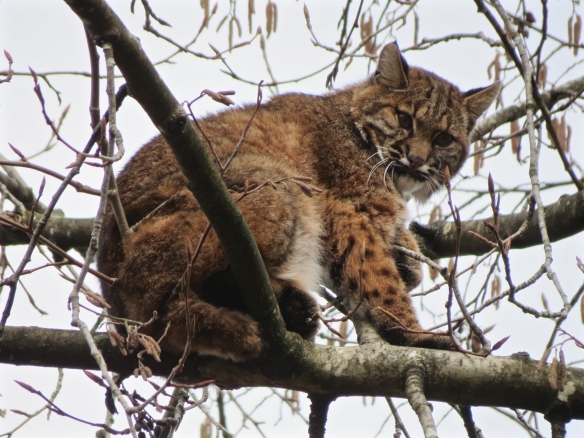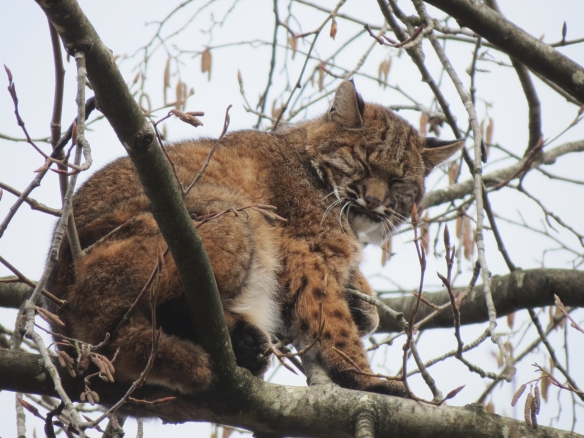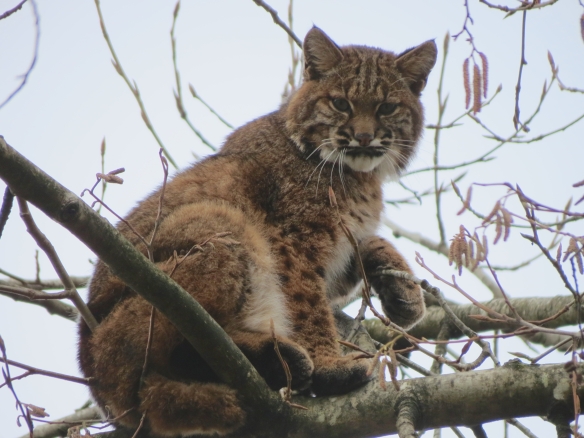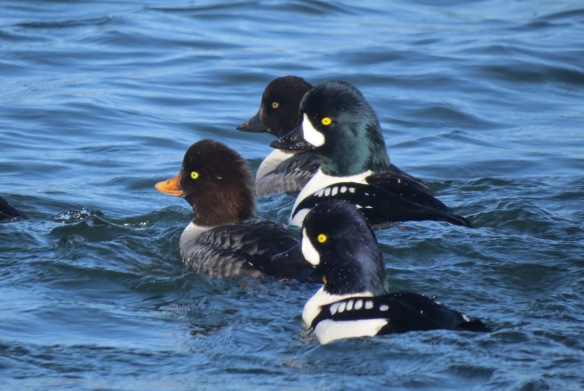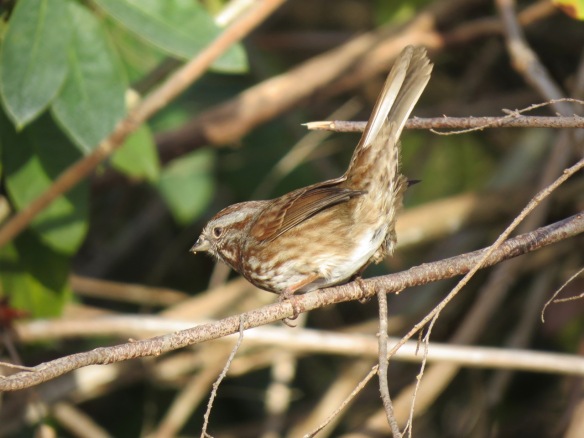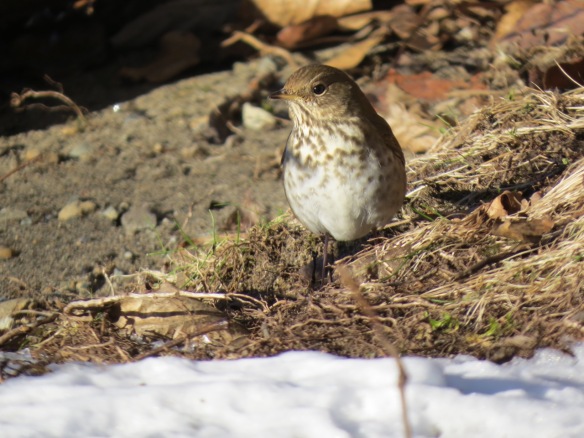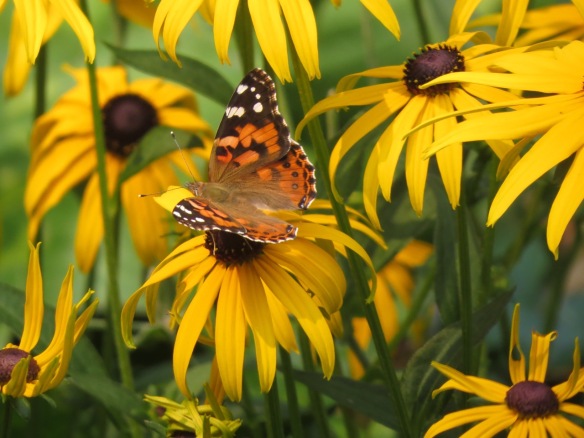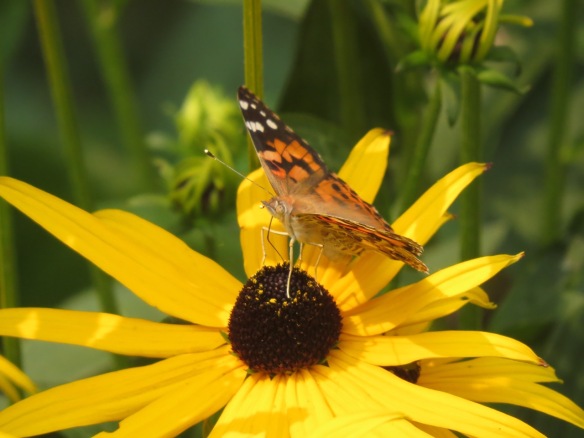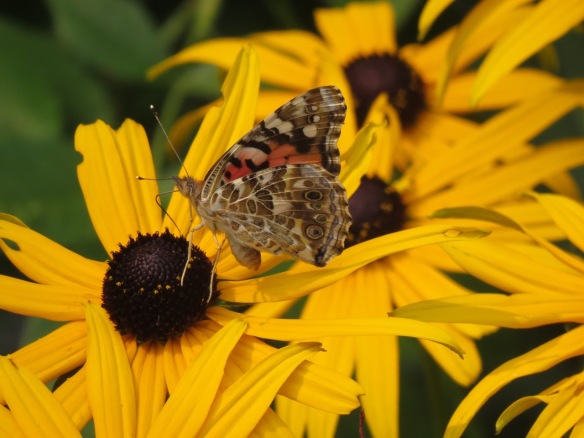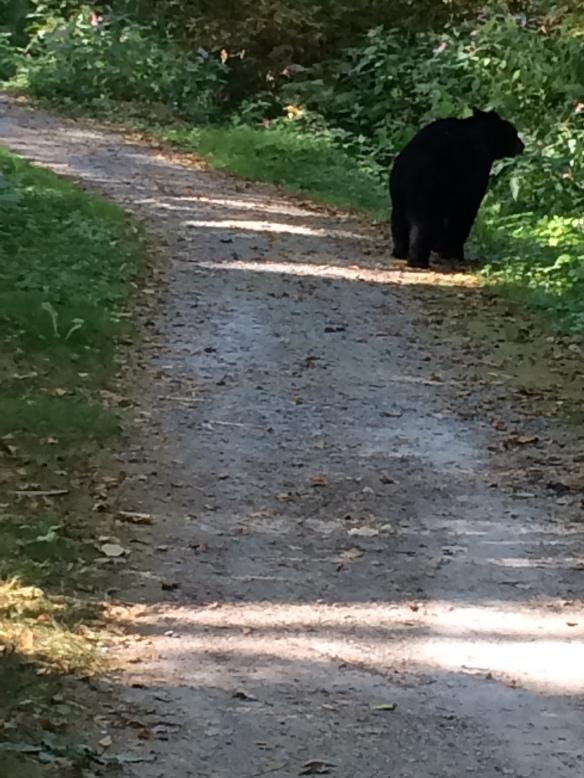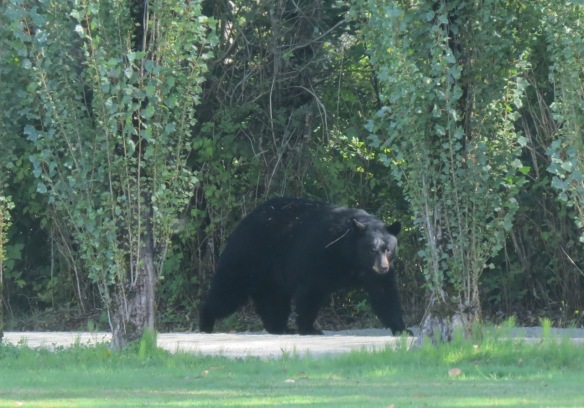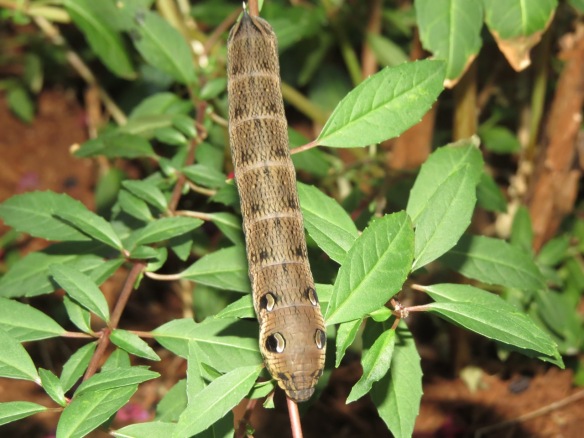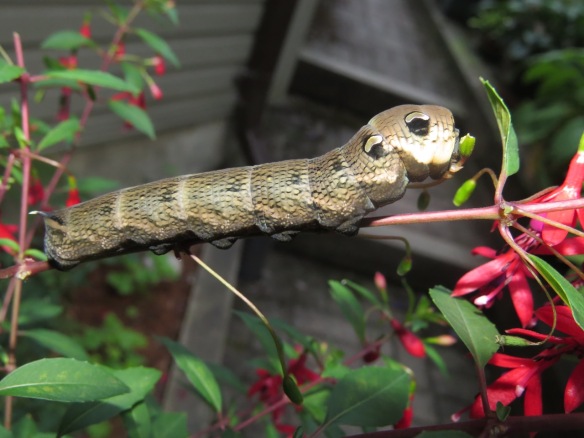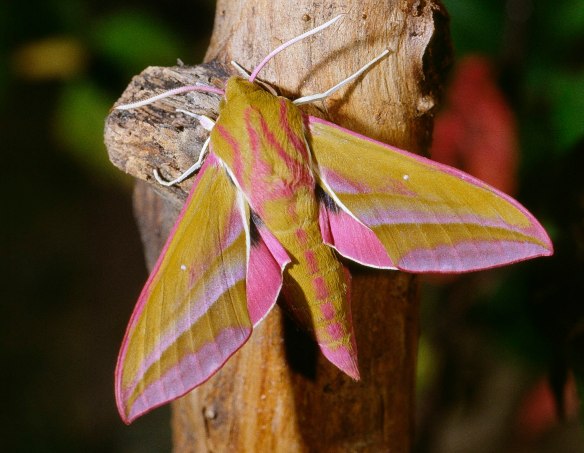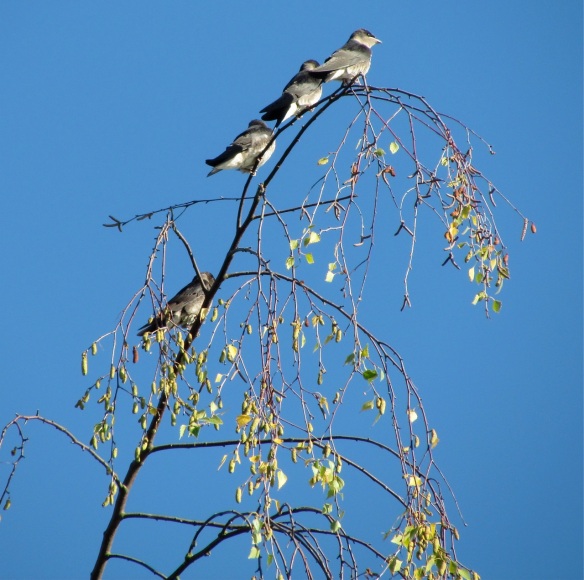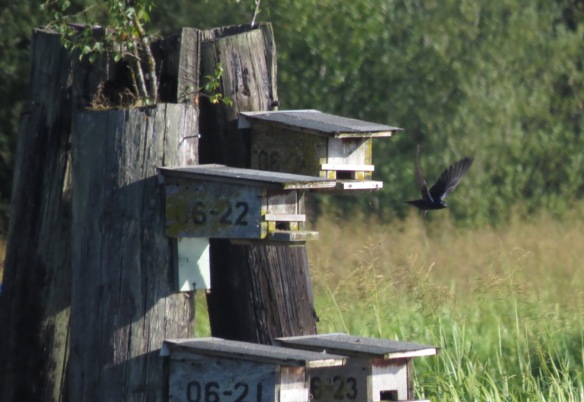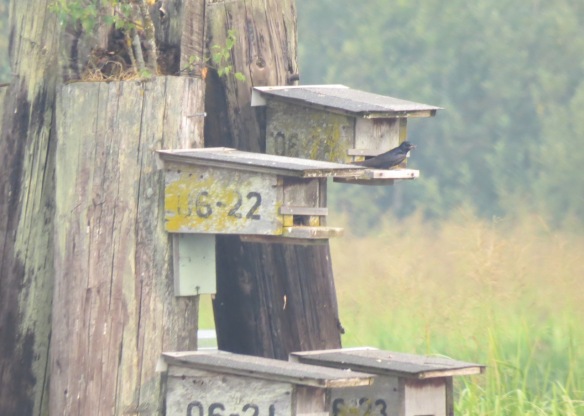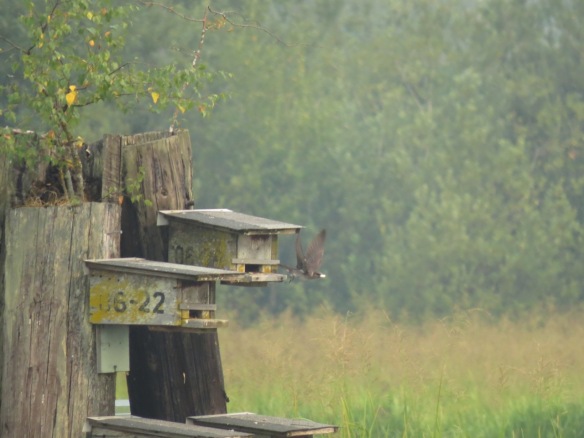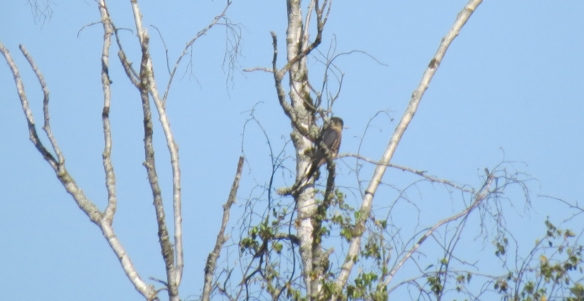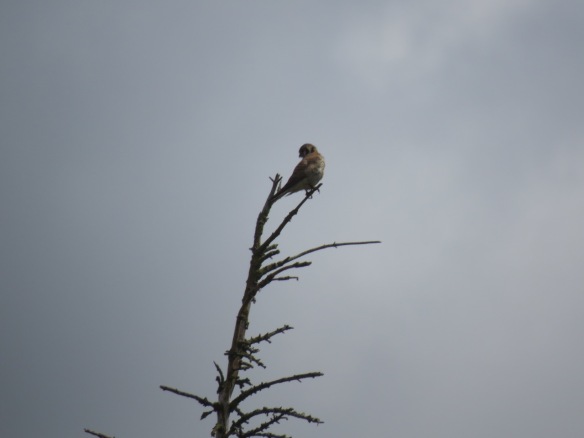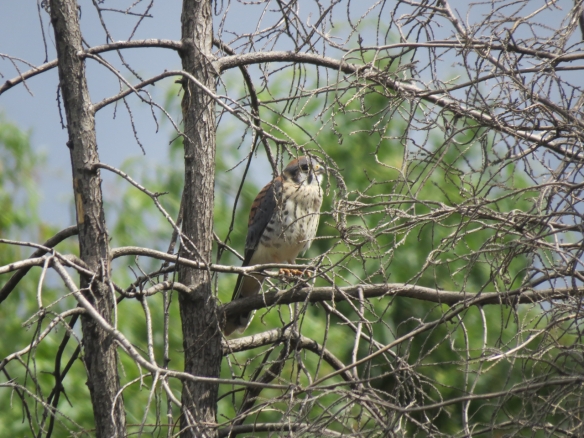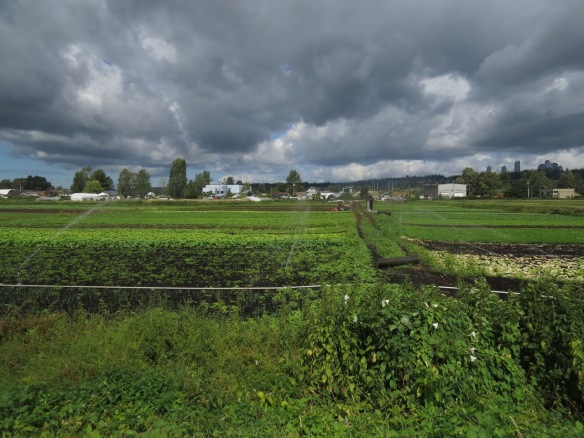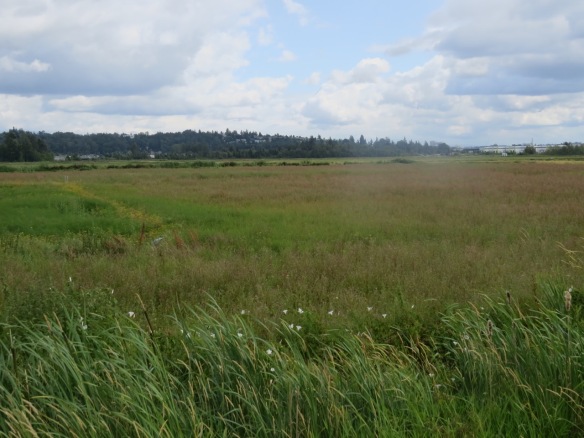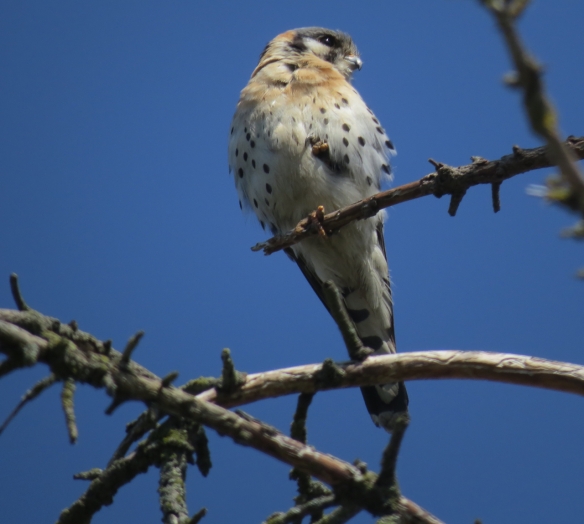Events can unfold in such surprising ways that make them impossible to ignore, or impossible not to share with others. This past Saturday was one of those events; I had my most memorable encounter yet with one of Deer Lake’s bobcats. I had my camera with me, and managed to take some good photos.
One click on each photo will enlarge the images nicely. Click the back arrow to return to where you were.
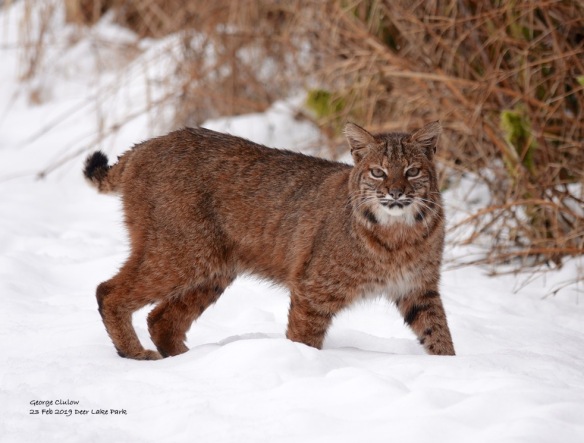
Looking right at me.
And an even closer look…
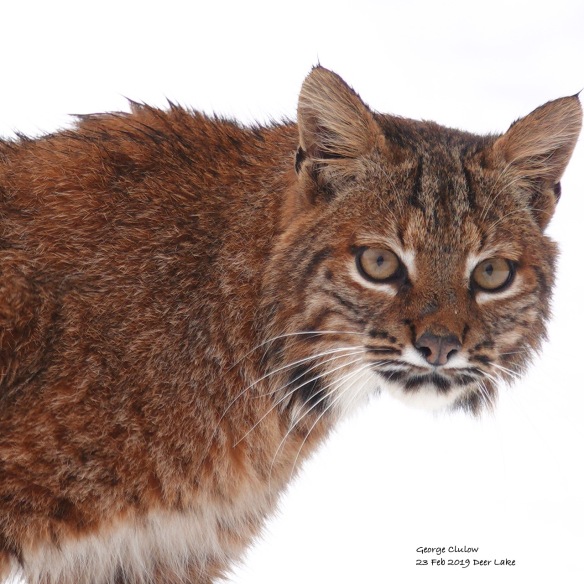
So how come the bobcat was so close? What’s the story here? A good one I think, and one worth retelling. It gives some lessons about our wildlife, and says a lot too about luck, among other things.
So read on if you want the longer story, or just scroll through the pictures. As the bobcat gets closer, the pictures get better.
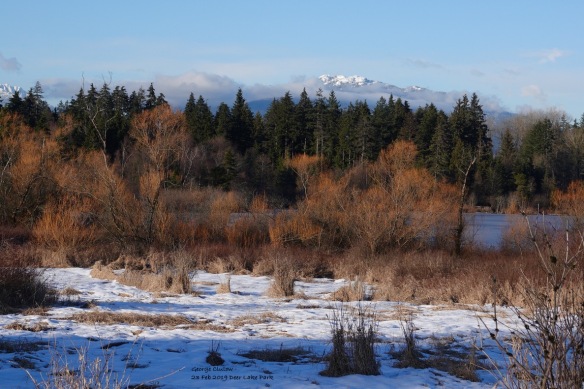
The south shore of Deer Lake where events unfolded – the willows glowing in the winter sun.
The photo above shows that the weather the day before the encounter was spectacular. At this very spot, I briefly saw a bobcat being mercilessly harassed by crows, crossing the meadow below from right to left. It was a binocular view only, too distant and too fleeting to get pictures.
I’d gone many months without seeing a bobcat in the park; the sighting made my morning walk for me. Hoping for some pictures, I did spend a half hour waiting for the animal to re-emerge from the riparian thicket into which it had disappeared. Even the crows gave up, and I eventually did too.
Next day, the weather was heavy overcast, but I was out on my walk expecting the snow to start again at any moment. Passing the same location as Friday’s sighting, I heard the crows suddenly start up again with some excited mobbing. Surely, this was too good to be true – bobcat sightings on two consecutive days.
But there it was! The bobcat walked out into the field, this time crossing from left to right. Below is a picture hurriedly taken with an animal recognizable, probably a feline.
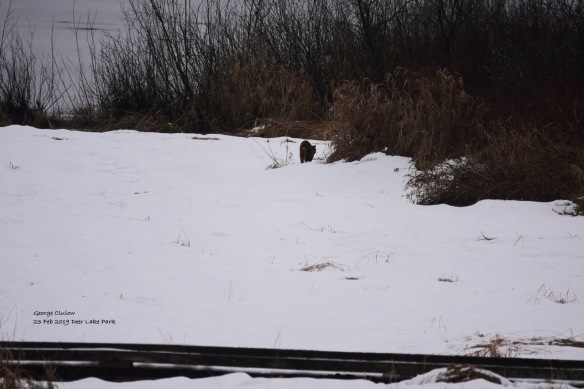
First sighting.
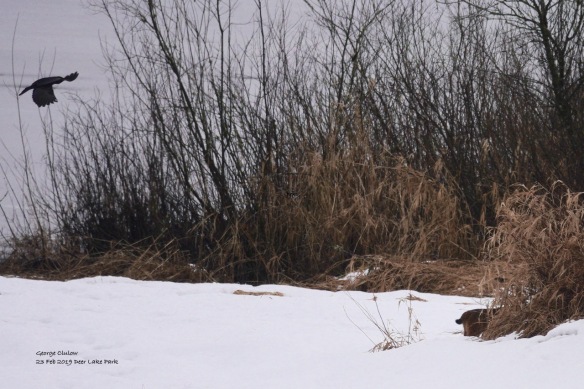
With crows harassing it, the bobcat takes refuge in a stream side thicket.
At least this photo shows it’s a bobcat – notice the bobbed tail.
The crows were relentless. I couldn’t see the cat, but the crows were showing me where it was and the direction it was travelling. It must be tough on a predator to be continually harassed in this way.
Finally, the bobcat slumped down in the snow, seeming to rest and attempt to get some relief from the crows.
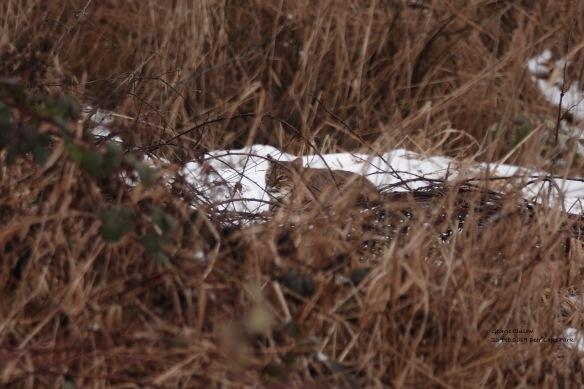
Hiding out
The attempt to hide out was unsuccessful; the crows soon got the cat moving again.
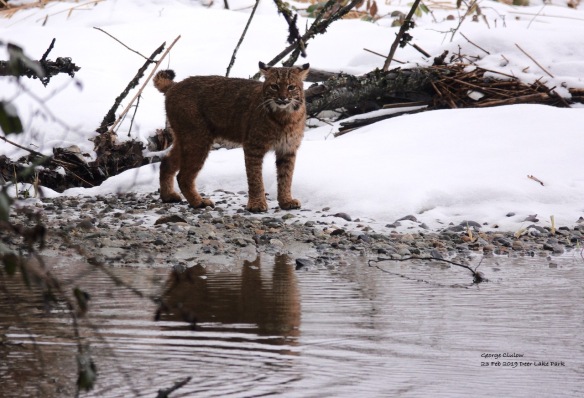
The animal was now travelling upstream along the edge of Third Beach Creek, but needed to cross the water to continue its journey. It definitely gave me the impression here that it didn’t want to wade the creek and seemed quite irritated at the prospect, ears back and flicking its tail.
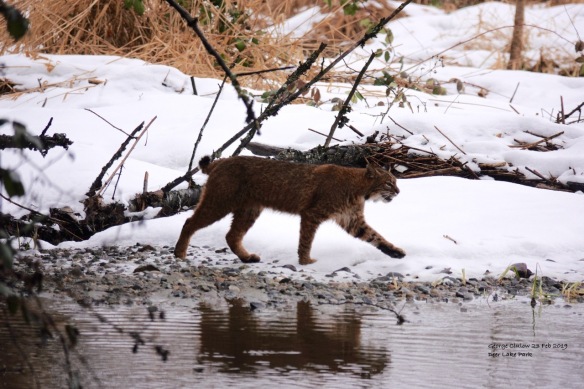
A brief snarl seemed to confirm its continuing irritation at the stream and the crows
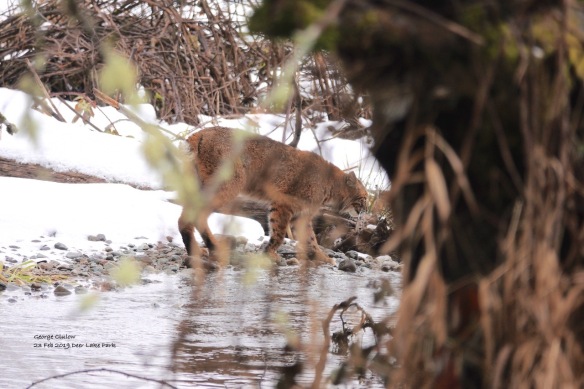
Crossing Third Beach Creek
It soon found a place to cross without getting wet and proceeded upstream, all the while heading in my direction where I was partly hidden by a stream side blackberry thicket.
I was then able to get some closer pictures, but not before it spotted me.
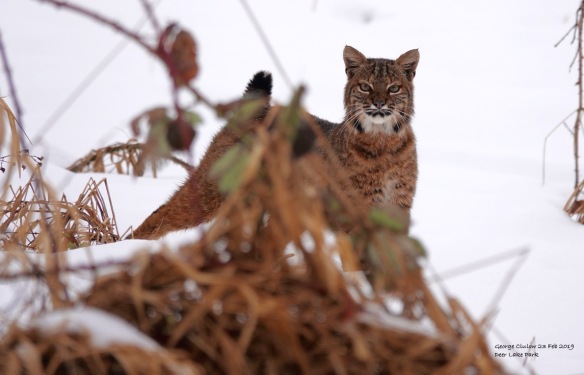
Seen ya
However, the bobcat kept coming up the meadow, taking a somewhat indirect track, angling away from me, but still getting closer all the time.
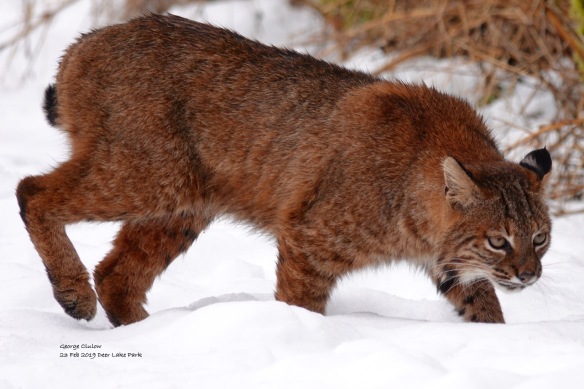
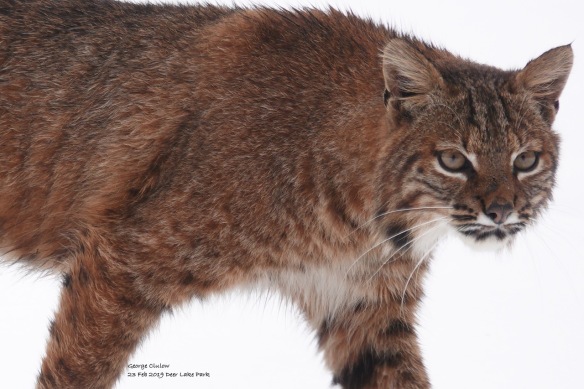
The two photographs above show some key features of the bobcat. First, the thin ear tassels are unlike those of its close relative the lynx. The lynx has thick ear tufts that stand up prominently. The thick fur ruff around the neck is another feature of the bobcat. Finally, the bobcat shows distinctive white patches behind its ears which show a family connection with the world’s largest wild cat, the tiger. What functions these white patches serve are not known. Although many species of wild cats have them, they are not universal among the wild felines.
Finally, the bobcat needed to cross the trail I was standing on to continue its journey up hill into the forest above. My presence seemed to give it pause. Although I hadn’t advanced from where I was watching, and was slow and careful moving the camera, we were pretty close, only fifteen to twenty meters apart.
He seemed to have second thoughts and turned.
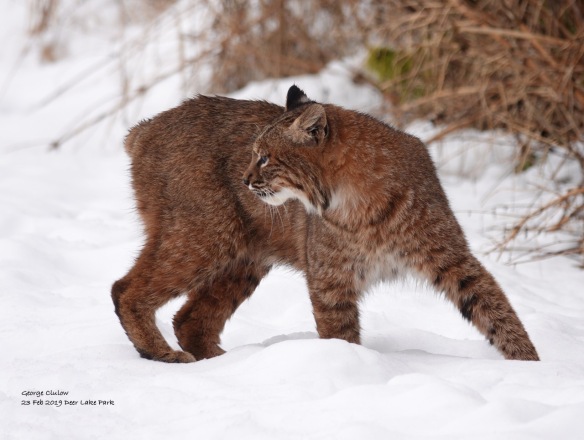
Taking a few steps back into the field, the bobcat paused again, turned one more time and continued on its original course, finally crossing the trail in front of me and disappearing into the hill side forest.
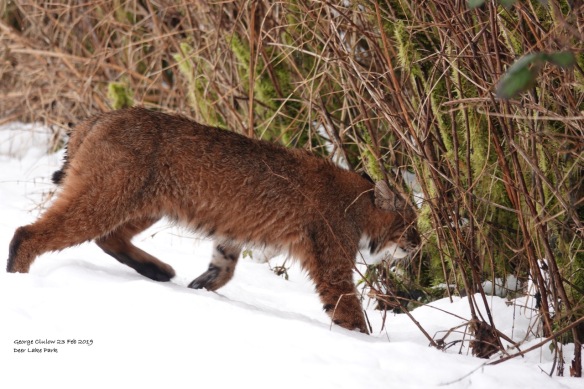
The crows continued their scolding for a while, but then fell silent. The bobcat was out of sight.
A number of things were at play in this fabulous opportunity to observe and photograph this wildcat in our midst.
These wild animals are living in urban environments, and even come into gardens. They see people continually, and although they remain cautious, they are not apt to bolt at the first sight of humans. They have some tolerance of our presence, and are no threat to us.
The trails were quite empty that day; I was the only person on that section of the trail during the whole event described above. I suspect, had there been a lot of walkers, and even dogs on the trail, the bobcat might well have behaved differently.
I made no moves toward the animal, staying put and trying to look non-threatening.
And lastly, I had remembered to bring along my camera! When you get outside, you never know what will turn up. Sometimes you’re just plain lucky.
For my earlier posts featuring Deer Lake’s bobcats check out:
https://burnabybirdguy.wordpress.com/2014/11/21/bobcat/
https://burnabybirdguy.wordpress.com/2018/03/25/wild-cat-in-the-city-another-sighting/

